B&W Magazine: Klink awarded at the Single Image Contest
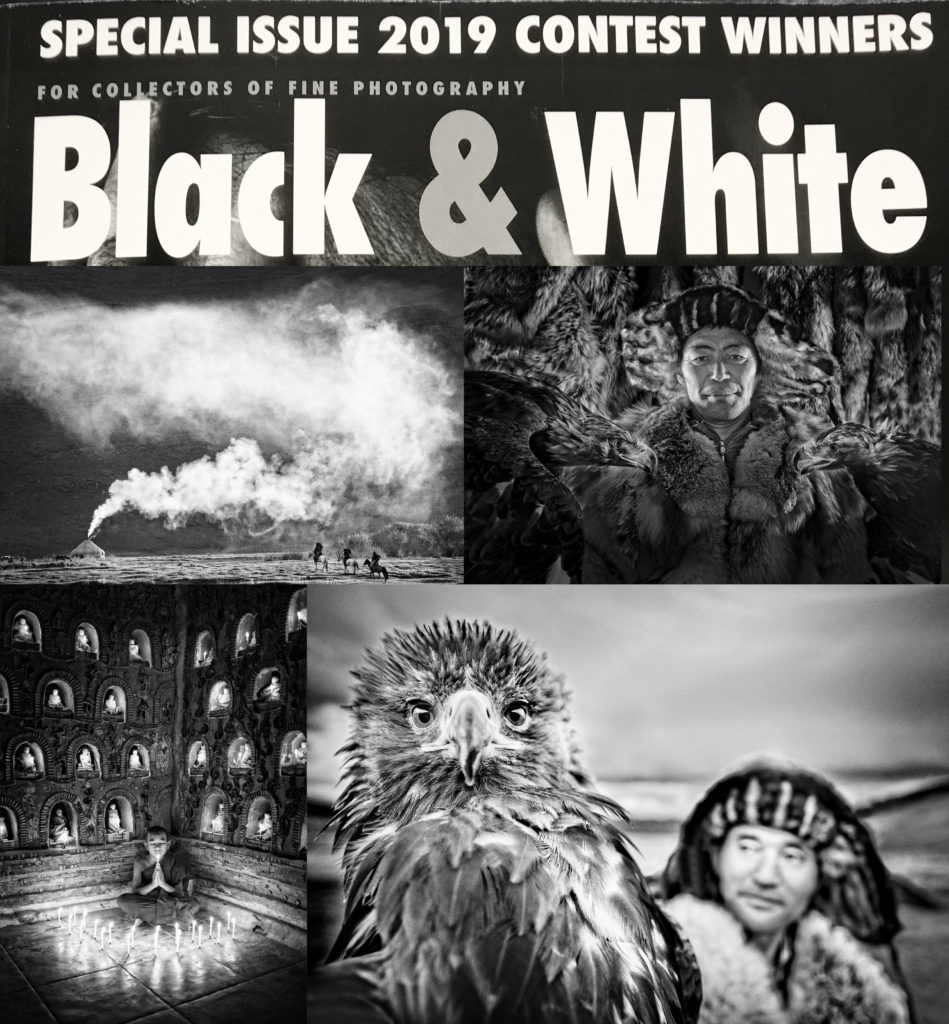
Black & White is the ultimate resource for connoisseurs and collectors of black and white fine-art photography. The magazine awarded Klink with an award for four of his images at the Single Contest.
All images can be seen at www.culturesintransition.com. His images are currently exhibited at the PhotoCentral Gallery (Hayward, California) until March 3, 2019. A special event will be held on February 23, 2019 (2-4PM), where Klink will give a tour of the exhibit. For more information and registration, click here
Black & White was welcomed by the photographic community from its first issue and its circulation has expanded around the world. While black and white photography is often thought of as a medium of the past, recent years have drawn more enthusiasts into its community, with many participants using digital-format cameras to create black and white images. We believe that the popularity of Black & White has been a factor in the accelerated growth of this medium and will continue to be a major factor in its continued popularity.
The Spider Awards: Klink receives four Nominations
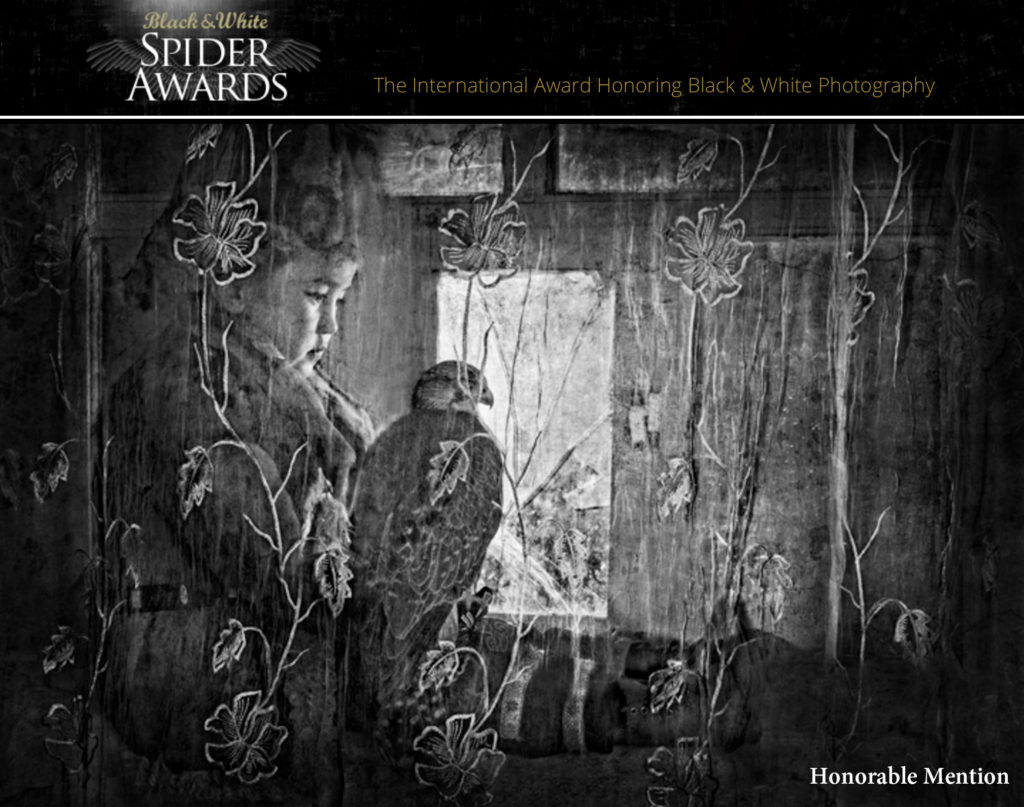
Her charismatic looks and obvious bond with her falcon make her a favorite for photographers. I overnighted at her home and photographed her at 1AM. After we were done, she asked me to show her all the images on my computer. To my surprise, her energy kept her up until 4AM. My question was: “Are you going to be tired at school tomorrow?” Her answer: “We do get an excuse to skip class when we meet foreigners.
Industry honors best images at the Global Awards Show for Black and White Photography —
Klink was honored to receive 4 nominations at the leading international award honoring B&W photography. The celebrated event shines a spotlight on the best professional and amateur photographers in a prestigious annual competition and globally webcast photo show.
Additional images can be view at www.culturesintransition.com
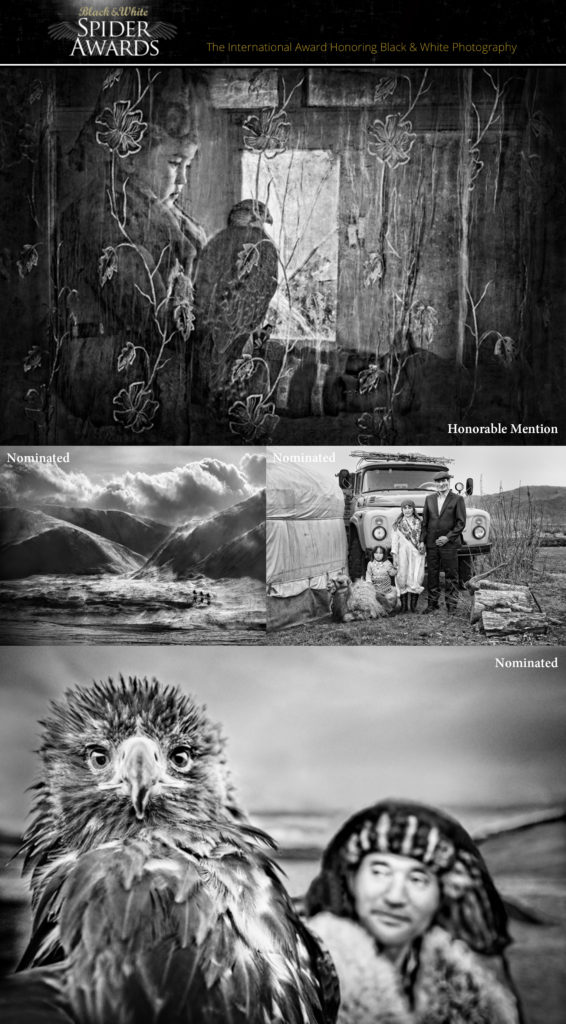
Interview: Oliver Klink BW Photographer of the Year at Dodho Magazine
Article link: https://www.dodho.com/interview-with-oliver-klink-first-place-in-our-black-white/
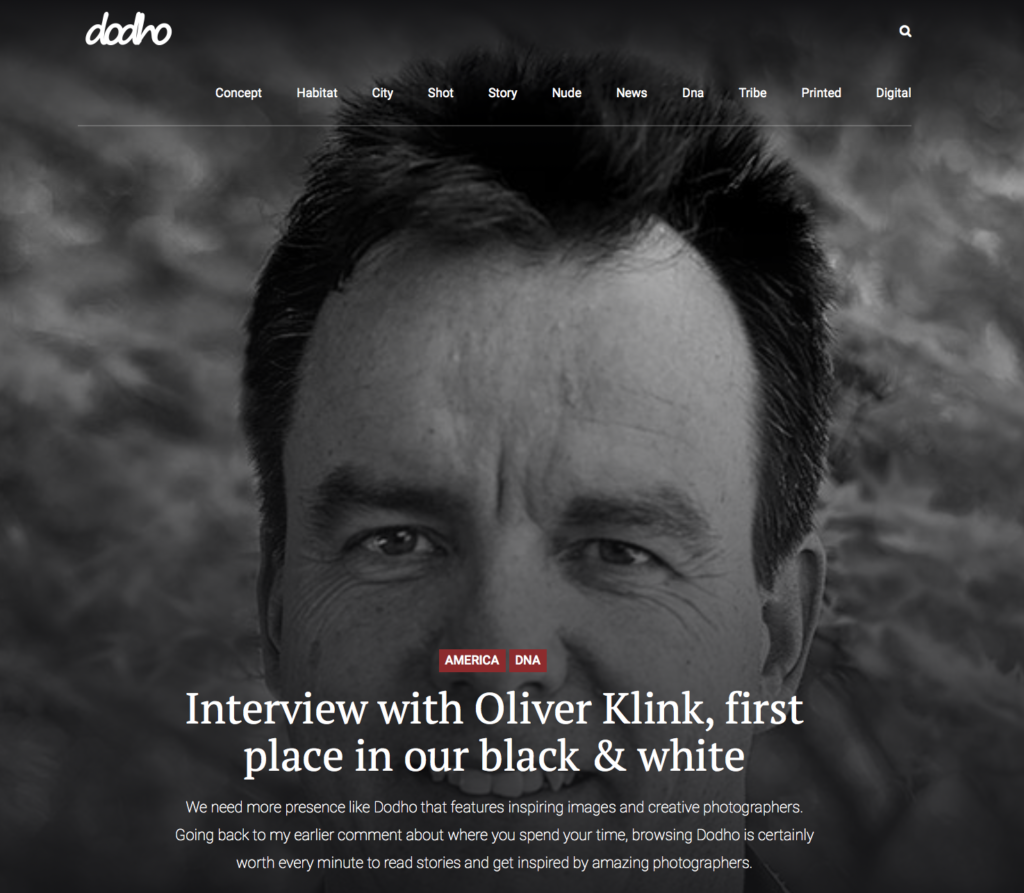
Can you tell us a little about yourself?
I was born and raised in Switzerland. I was educated in three different countries (Switzerland, Canada, USA), got a Master in Physics, Master in Business and studies in photography. Photography was always a passion and it eventually turned into a profession (www.incredibletravelphotos.com, www.oliverklinkphotography.com, www.culturesintransition.com). I travel the world (photographed in 116 countries) to capture the intricacy of the world we inhabit and to teach photographers to make images that have a personal flair.
Rest of the interview at: https://www.dodho.com/interview-with-oliver-klink-first-place-in-our-black-white/
Pecha Kucha Presentation at the CBAA conference (Tucson January 2019)
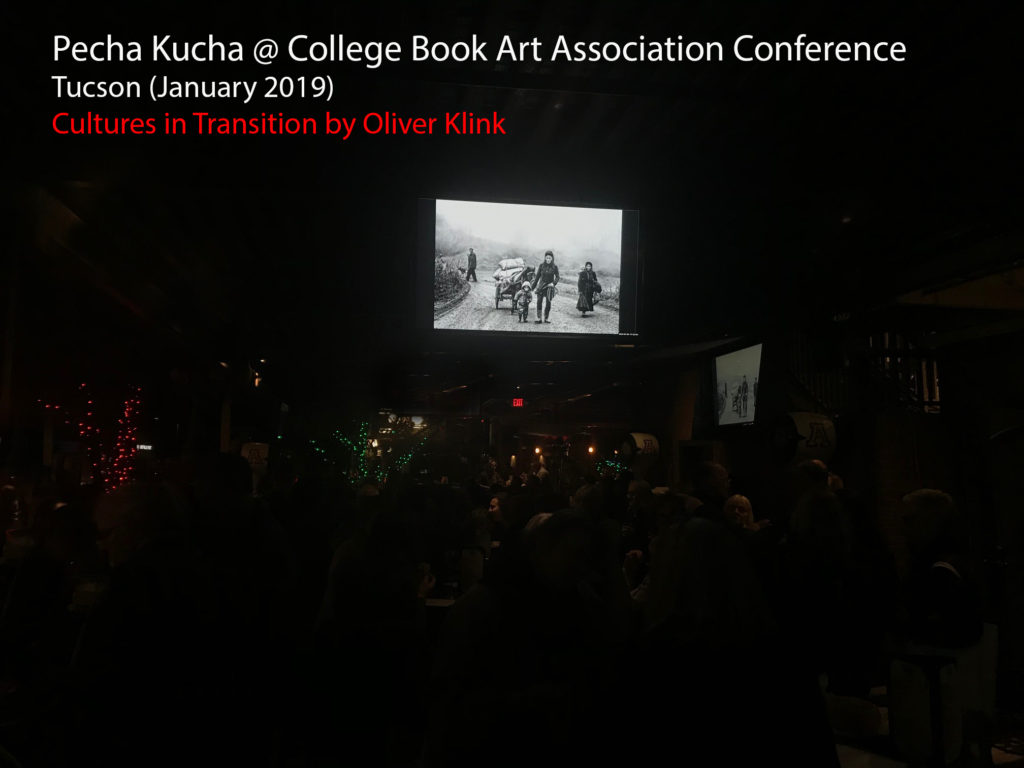
PechaKucha (Japanese: ぺちゃくちゃ, IPA: [petɕa kɯ̥tɕa], chit-chat) is a presentation style in which 20 slides are shown for 20 seconds each (6 minutes and 40 seconds in total). The format, which keeps presentations concise and fast-paced, powers multiple-speaker events called PechaKucha Nights (PKNs).
During the College Book Art Association conference, I was invited to present my project Cultures in Transition: Spirit-Heart-Soul.
Cultures in Transition explores the changes that people go through, the subtleties that make their life evolve, their spiritual guiding light. In the past 15 years focusing on 5 Asian Countries, I observed the continuity between family, work, and spirituality. There was no separation. This Fluidity of life is at the core of Cultures in Transition.
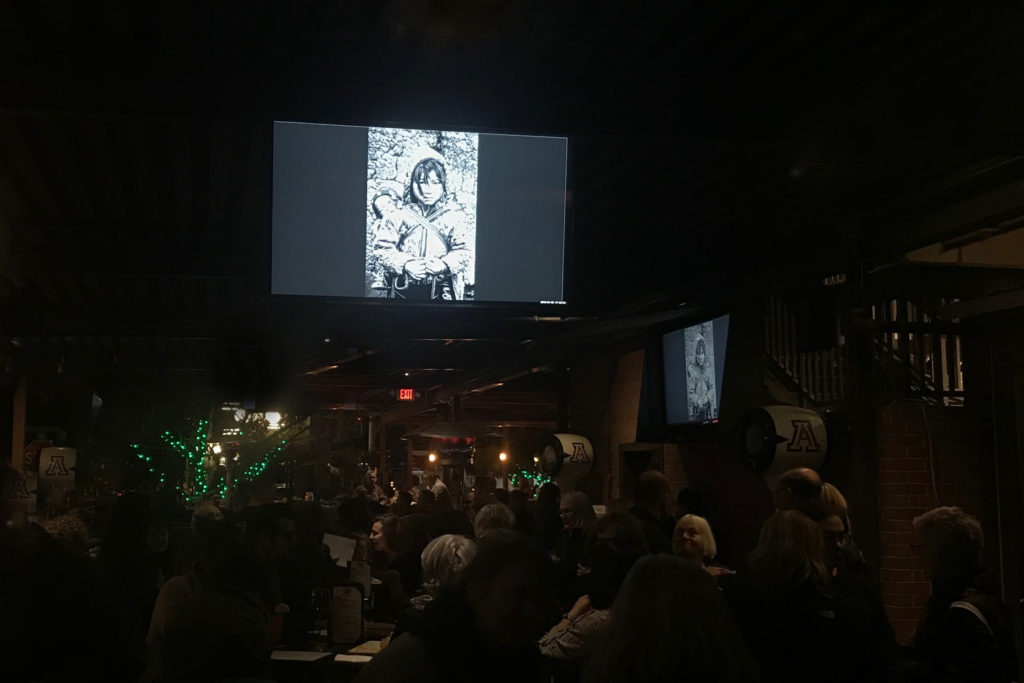
Link to the video: https://www.culturesintransition.com/Video/i-jrKnRzS/A

TriCity Voice Newspaper: Cultures in Transition Showcase World Class Photography
Published 12/11/2018. Page 37 (https://tricityvoice.com/12-11-18/)
Dates: December 15, 2018– February 15, 2019
Reception: Saturday, December 15, 2-5 pmfeaturing a book signing with Oliver Klink and cultural performances by the Mongolian Community Association of Bay Area
Contact Person: Geir Jordahl, 510-881-6721, [email protected]
PhotoCentral presents Cultures in Transition: Photographs by Oliver Klink. Cultures in Transitioncelebrates the cultures of Asia including Bhutan, Myanmar, China, Mongolia, and India. The exhibition coincides with the book release of Cultures in Transitions: Spirit – Heart – Soul. Oliver Klink will be on hand to sign copies of this limited-edition book.
The book, published by True North Editions, was printed in Italy is 168 pages printed in tritone. There are essays by Anne Wilkes Tuckers, Peter Finke and Geir Jordahl as well as stories about the images by the photographer.
The PhotoCentral Gallery is located at 1099 E Street, Hayward, California. Upstairs gallery is open Monday-Friday 9 am to 5 pm; Downstairs gallery hours are Monday 5 pm -10 pm, Tuesday & Thursday 10 am-1 pm and by appointment.
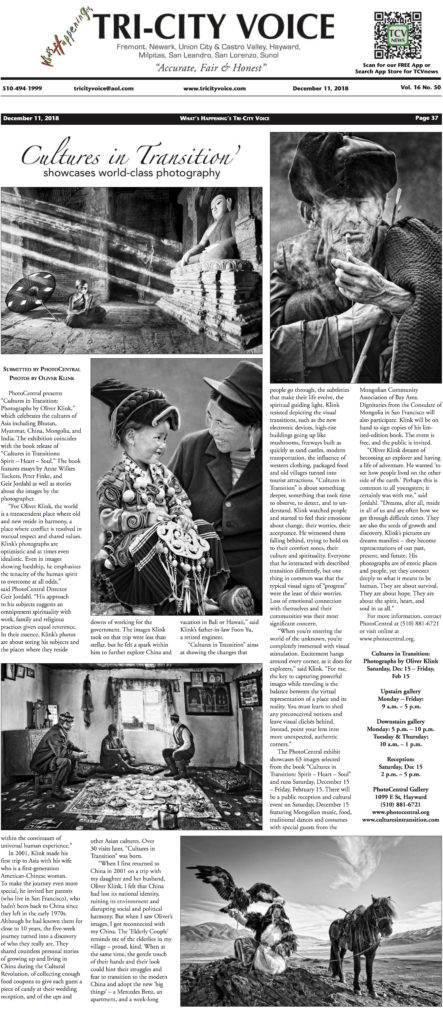
ArtWeek: Cultures in Transition to premiere at PhotoCentral Gallery
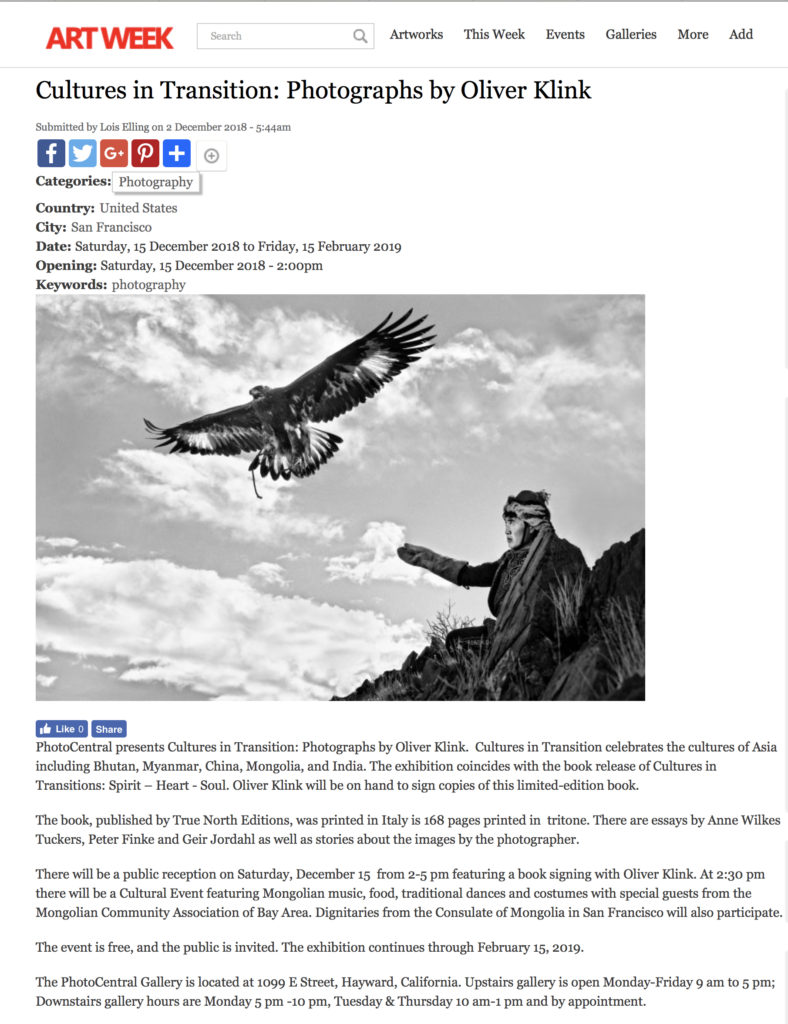
Oliver Klink Selected as Top 50 Critical Mass 2018 for his work: The Soul of the Burkitshi
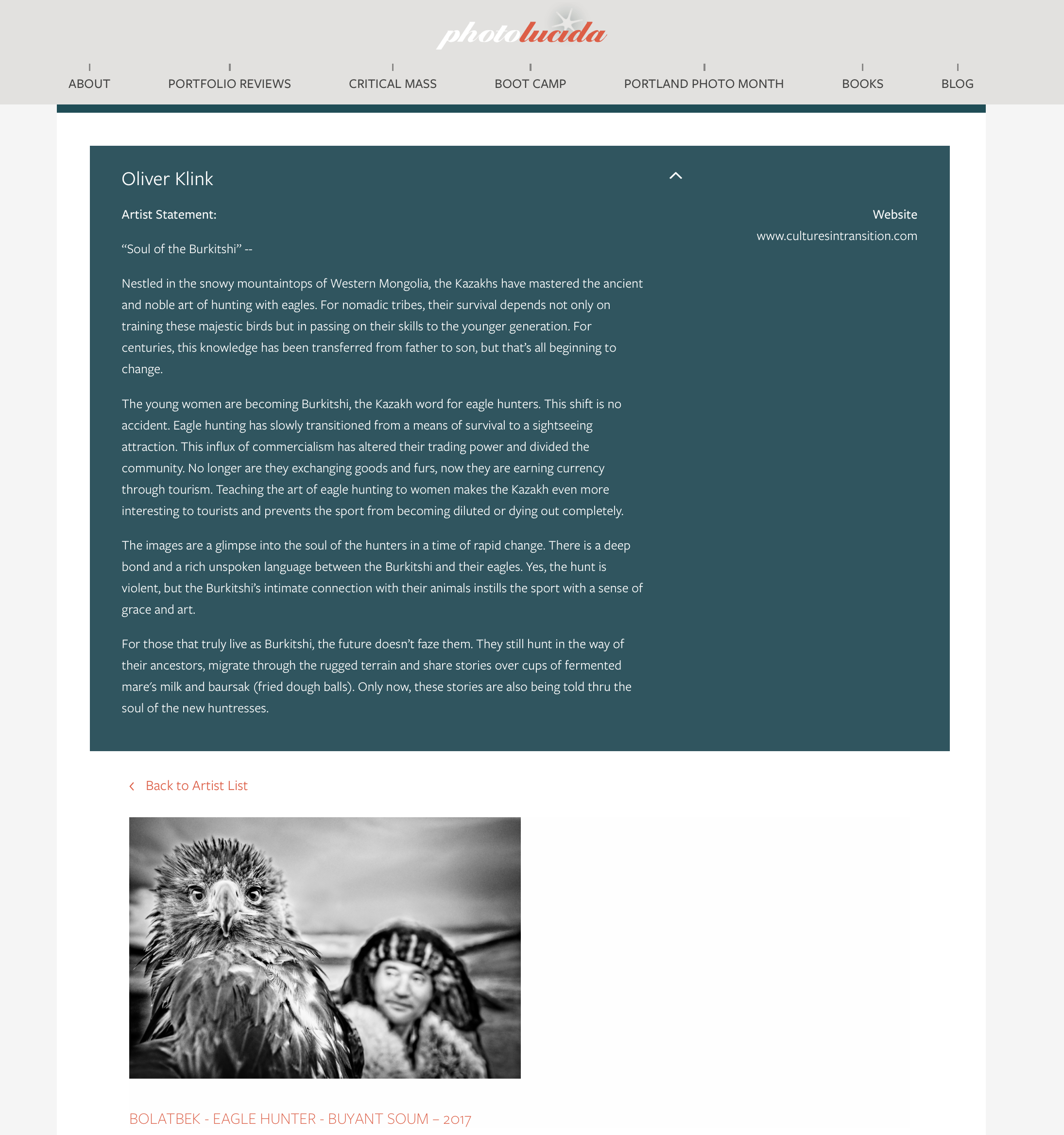
What is Critical Mass? The aim of Critical Mass is to provide participants with career-building opportunities and to promote the best emerging and mid-career artists working today. Critical Mass is about exposure, connection, and community – as well as some very notable awards! Photolucida is excited to once again offer our Critical Mass MFA Student Scholarship Awards this year.
How is the selection done? Critical Mass gets photographers’ work in front of 200 top museum curators, gallerists, publishers, editors, and media producers. That’s a lot of eyes. As an individual photographer, it’s difficult to make connections with professionals at this level – much less with 200 of them. In Critical Mass, photographers (from anywhere) submit a 10-image portfolio. The 200 finalists who proceed past the first, pre-screening round then have their work reviewed and voted on by the full panel of 200 jurors. It’s an unprecedented way to get your work in front of the right people!
Who are the jurors? Our Critical Mass jurors are an international group of industry professionals representing a wide variety of photographic interests. We make a great effort to invite a wide range of professionals in the field (gallery owners, agency art buyers, curators, publishers, editors, media producers, etc.). In addition to seeing the work during the online voting process, jurors also have access to a database of the finalists’ work for future reference.
I am honored to have been selected as Critical Mass Top 50 (2016 & 2018) and Critical Mass Top 200 (2017). All three projects that I submitted are included in my monograph – Cultures in Transition: Spirit, Heart, Soul. More information can be found at www.culturesintransition.com
In 2016, I submitted the first chapter: The Spirit of the Village. Entering a village is stepping back in time. Narrow streets, sometimes paved, most of the time dirt paths. Un-numbered homes are the norm, as everybody knows each other. Streets wind in un-orderly fashion over streams of running water, sometimes fresh often as open sewage. Early morning feels like a metronome wakes up. Few words are exchange among neighbors, prayers and chores get on the way, people leave to go farming. Late afternoon, the center of the village gets busy as daily stories are shared over many types of beverages. People retreat to their home when darkness approaches. Description might be symbolic but the feel is pretty accurate. My interest was to capture the inner belly of the Village, what happens inside people’ homes, how they think, how they feel. Spirit of the Village is changing, mainly affected by the modern world innovation. Rapid changes often comes at the cost of old-world customs, rituals and social relationships. This is especially true in Asia, where a search for new opportunities in urban areas has led to a mass exodus of the middle generation in rural communities. Those left behind are balancing a growing tension between the cultural diversity of the past and the homogenized present. Villages are populated by those on opposite ends of the generational divide — grandparents and children. The net result often creates a situation where those desperately looking to preserve tradition are caring for those most-willing to embrace change. From a western perspective it may look like time stands still in the Village, and it some ways it does, but below the surface there exists a struggle between old and new, tradition and modernity that ultimately must come into balance as villagers hold onto their Spirit while coping with the reality of a modern world.
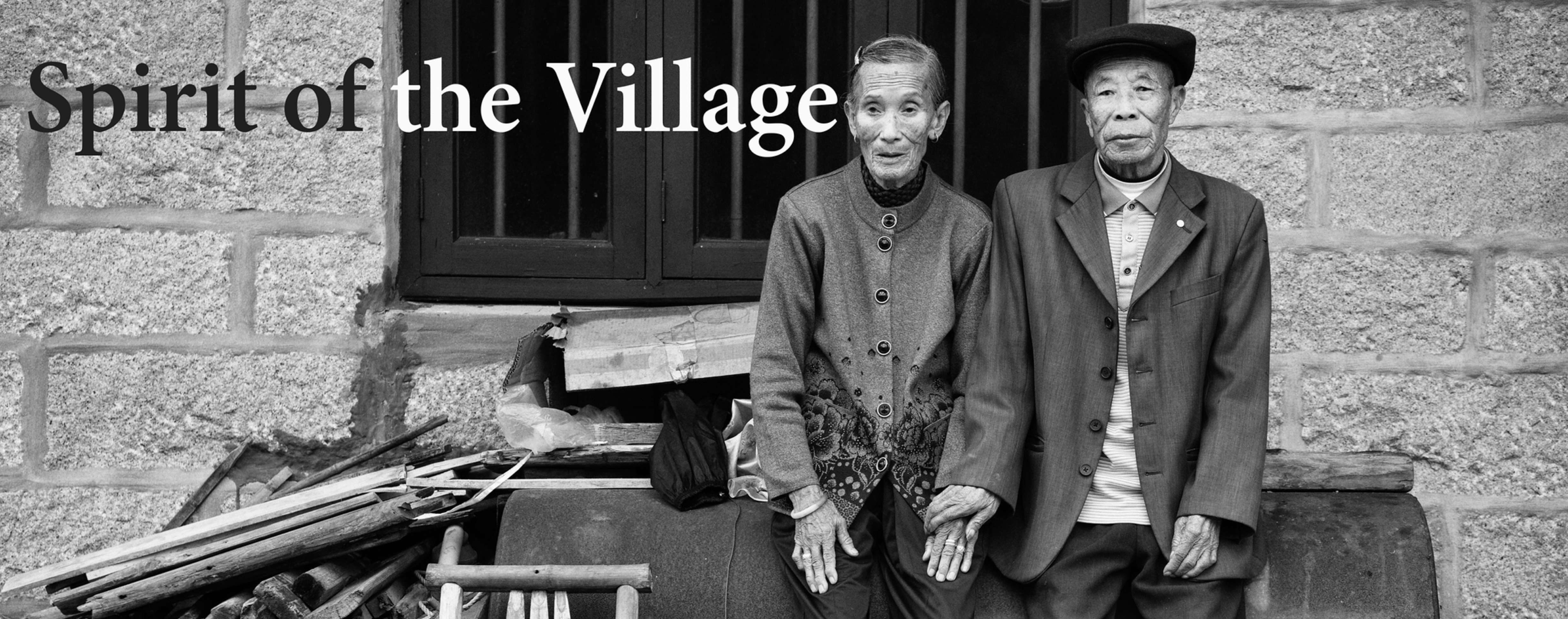
In 2017, I entered the Heart of the Yi. For centuries, the Yi people have been surviving in the remote mountainous regions of China. In relative isolation, they have developed their own language, costumes and customs. Unfortunately, their detachment has also left them vulnerable to poverty, famine and the ever-encroaching reach of commercialism on their land. Exacerbated by the 2008 Sichuan earthquake, a disaster that killed 69,000 people, the Yi are struggling to rebuild their world as it has always been. Traveling deep in Yi territories is a trip back in time. The “last mile” is seldom as described, often restricted, but rewarding when you reach the “heart of the Yi” culture. The parents are hard at work, cultivating the land for subsistence. The young split their time between morning school, helping with daily chores, and taking care of their infant siblings. The nightly activities are basic as many of the homes have little to no electricity. But the lure of comfort in form of new homes and modern amenities has the Yi fiercely resists as they want to protect their homeland and authenticity. These images are a glimpse into the heart of the Yi. They showcase their daily joys and struggles not by embellishing them, but by showing them exactly as they are. Yes, their customs and way of life are antiquated, but their instinct of survival and resistance to change is commanding and full of hope.
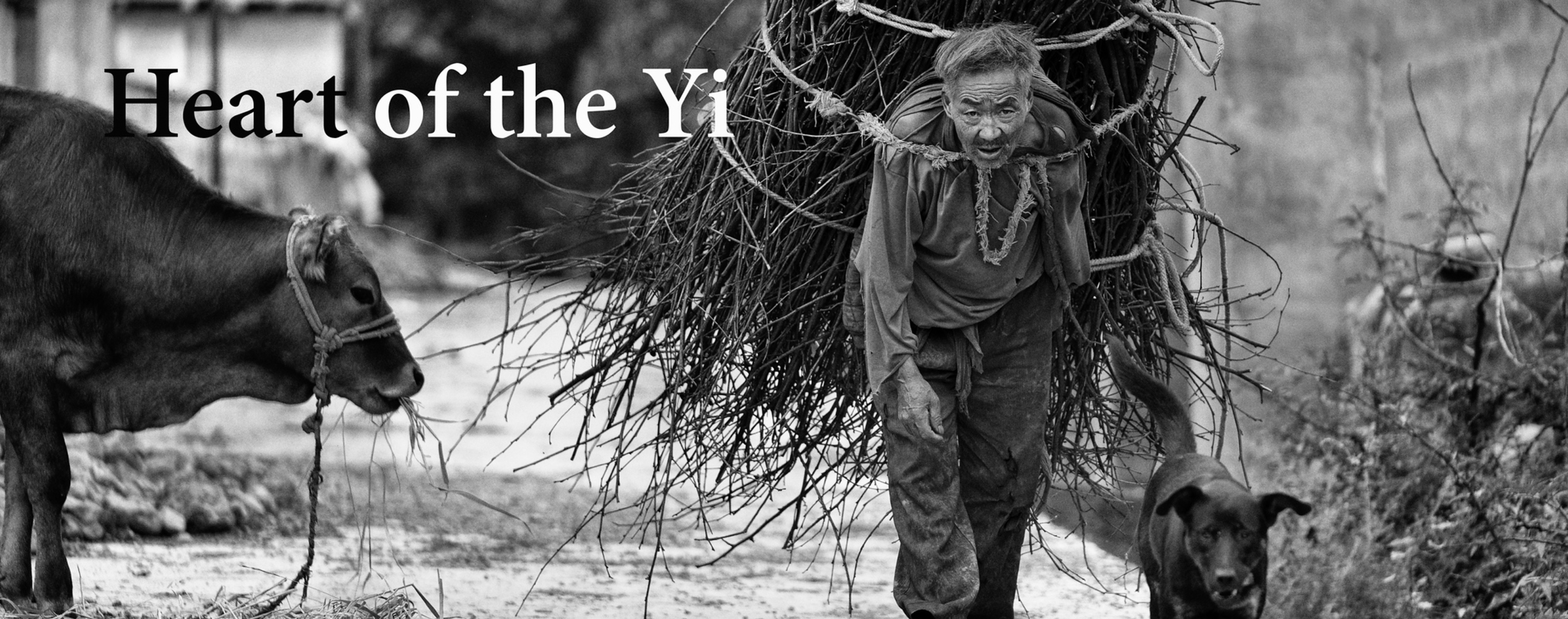
And in 2018, the entry was about the Soul of the Burkitshi, the eagle hunters of Mongolia. (see statement above).
Don’t miss the opportunity to own all three body of works, with essays from Anne Wilkes Tucker, Peter Finke, Geir Jordahl, over 15,000 words detailing the journey (15 years) and the stories of all the people photographed.
Book is available as a limited edition and collector edition. www.culturesintransition/orderform
Black and White Magazine awards Spotlight Award to Oliver Klink for his work: The Heart of the Yi
Issue 130 – December 2018 (on the stand October 1, 2018) – Article by David Best
California photographer Oliver Klink lives a life of adventure and exploration, and, of course, photography. His camera acts as a sort of passport to some of the more exotic and remote regions of the planet, and his photographs show a world that most people will never see outside of the pages of National Geographic. Of the 112 countries he has visited, we will focus for now on just one; China, and in particular on a remote and mostly inaccessible ethnic group of people that most have probably never heard of and fewer still visited: the Yi of Southwest China.
Galen Rowell once said that his legs got him into photography and they also got him to places where there were stunning photographs to be made. The same is true for Klink. As an avid skier growing up in Switzerland (he was on the national Swiss ski team), Klink’s physical aptitude and stamina got him to places in the Swiss Alps that were breathtaking, and it soon became apparent that he needed to chronicle these moments.
“When you are raised as a competitor,” Klink says, “You like to push the boundaries and find new frontiers. Photography also offers me these feelings. When out shooting pictures you are alone with your equipment and your subject, and you push the boundaries of what is possible. Skiing competition is also a long-term investment in terms of training and keeping focused on a goal. I find the same is true with photography. I’m never worried about how long it takes to successfully complete a long-term photographic project I am excited about.”
One project that has occupied Klink for the past seventeen years is his exploration of the Asian cultures. He first visited China in 2001 and has since made numerous visits. “Photographing the Yi, one of the 55 ethnic minority cultures, was full of surprises.” He says. “I was so remote in the Chinese countryside that I knew if anything should happen, nobody would ever find me. The roads were muddy, the visibility was awful and we often had to traverse heart-stopping cliffhanger roads, and then switch to horses to complete our journey”
The regions Klink explored in the Sichuan Mountains are very remote, and the Yi people are mostly unfriendly to outside visitors, especially photographers. Klink had three failed attempts to make contact with these people when one night he was kicked out of his hotel room to make room for visiting government dignitaries. With no place to stay, he met a local farmer who took him under his wing. “He enabled me to make impromptu stops along our way,” says Klink, “To take side roads, visit his village, and gain insights and access into the Yi culture. I was transported to a world that I could hardly believe still existed, and had flashbacks to images made in the 1930’s.”
On each subsequent trip, Klink’s explorations became even more rustic and further off the beaten path. It was only by visiting the region over and over that he started to lose his ‘tourist goggles’ as he calls them. He established trust, and began to focus on the true essence of the people; their daily joys, struggles, hopes, and fears of an uncertain future. China is developing at such an astonishing rate that even the most remote corners of China are subject to rapid modernization. “When you venture all the way down the road, says Klink, “Not just halfway, you can witness the histories and traditions of the people that are quickly disappearing from view, and from our planet.
“When I photograph, I like to operate like a movie director. I like to plan ahead, and I always have an idea of what I am looking for. But like most good movies, the best scenes often come from improvisation, when the elements come together at random before your camera lens. Some of my favorite mottos include: Be true to yourself. Never rest on your laurels. Read a lot. Be out there rain or shine. Don’t reinvent the wheel, but reinvent yourself constantly.”
Klink’s approach to photography is very therapeutic for him. He tries to become one with the people he meets and then hopes his viewers will also connect with his subjects through his photographs. He tries to observe a lot and shoot little. It is not uncommon that he comes back with just a few ‘keepers” from three weeks of strenuous wandering in a foreign country.
“A photograph is a kind of time travel,’ he says. “It transcends geography and culture to share a moment, however brief, of true connection. I hope this collection, which I’m including in my book to be titled, “Cultures In Transition,” can transport my viewers as well. The lives I capture are diverse. I believe the photographs I make are attempting to tell the same story: illuminating the spirit, heart, and soul of us all.” — David Best
Images are part of a monograph, published by True North Editions, titled Cultures in Transition: Spirit, Heart, Soul.
The book is available for purchase at https://www.culturesintransition.com/OrderForm
Press Release: Oliver Klink featured in The Palo Alto Weekly (Africa: The Struggle of Beauty – Group exhibit with Sebastião Salgado, Andy Wegst, & more)
October 1, 2018
Article in the Palo Alto Weekly by Karla Kane


The elephant is one of the most enigmatic creatives in all of the animal kingdom. To some, they are majestic creatures worthy of worship, to others merely beasts of burden. Regardless of human perception, they are incredible animals that are full of intelligence, empathy, and a genuine curiosity for the world.“Life” is a photo series that attempts to showcase elephants in their totality — not just a small fraction to be misunderstood. Approaching this project with a painterly touch, I’m aiming to create vivid portraits of these animals as they navigate between freedom, domesticity, and destruction.
The Making of Cultures in Transition
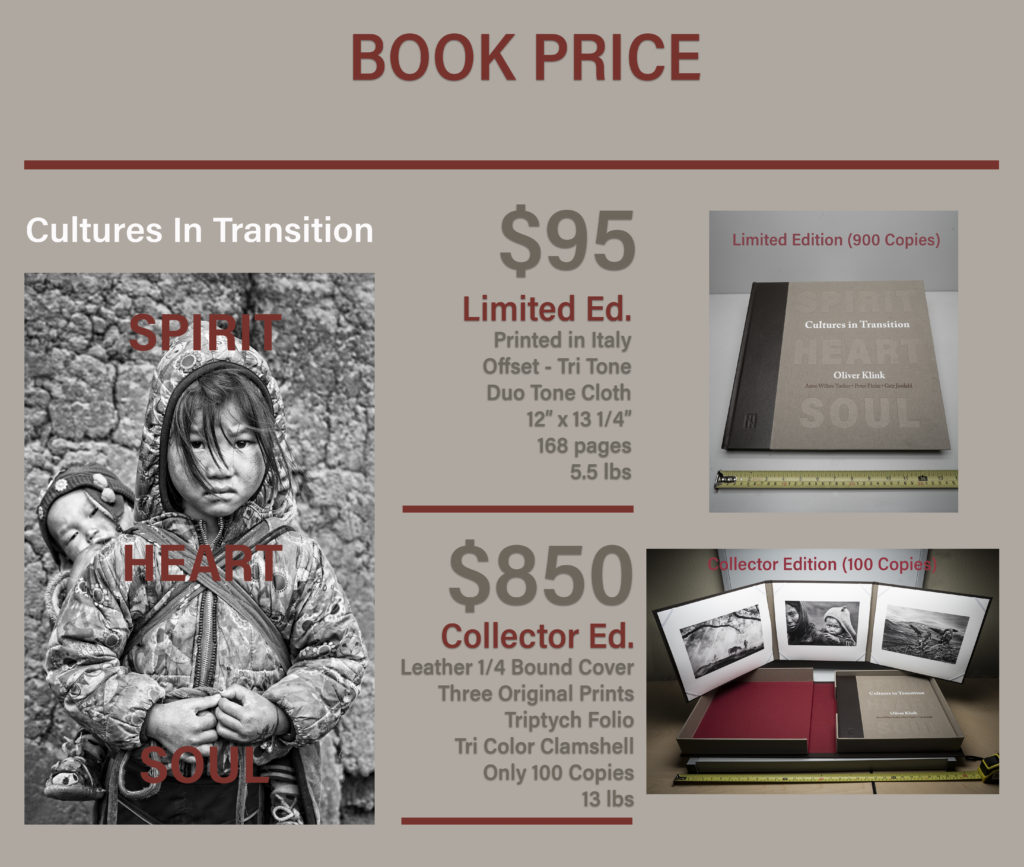


The final touch was the appearance of the book, the cover, the Limited Edition, the Collector edition. We browsed thousands of books for ideas and came up with new and creative ones! In early July, I traveled to Italy to monitor the first test prints. AMAZING! As I wrote in my essay, it rekindled my youth working with my dad, who was a printmaker. When there, we brainstormed on the material for the book cover and the Collector edition. The never-ending quest for uniqueness and authenticity.

Today the book was sent to Italy, so they can build the plates, custom mix Pantone colors, and get ready for Geir and me to visit the Longo press and the bindery (both in Northern Italy) in early September. The journey has been nothing but thrilling, exhausting, full of creativity. And I have never produced images with such printing quality (hundreds of hours reprocessing images to match the feel of the book).



